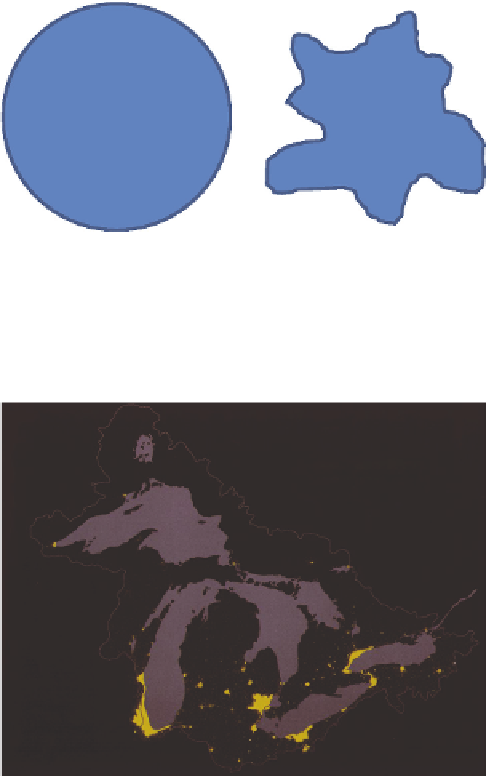Environmental Engineering Reference
In-Depth Information
Shape A
Shape B
FIGURE 11.7
Comparison of lake shoreline indices. (Modiied from Florida LakeWatch, A beginner's
guide to water management—Lake morphometry, Information Circular 104, Florida LakeWatch, University
of Florida, Gainesville, FL, 2001.)
Distribution
of population
FIGURE 11.8
Population distribution in the Great Lakes. (Courtesy of the USEPA,
Great Lakes Atlas
.)
11.3.7 p
ercent
L
IttoraL
z
one
Generally, the greater the percentage of the lake that is within the littoral zone, the greater the
inluence of that zone on the lake. The percentage of the littoral zone impacts the abundance and
diversity of plants, benthic organisms, and isheries. Some lakes and reservoirs are almost 100%
littoral (they lack a lacustrine zone).
11.3.8 S
urface
a
rea
and
w
Ind
e
xpoSure
(f
etcH
)
The impact of wind varies with the unobstructed distance that wind can travel over water before
intersecting a landmass, which is known as fetch. The fetch can impact wave formation and wind
mixing, and seich formation. The greater the fetch, usually the greater the wave height and the
deeper the wave energy and the resulting mixing extend below the water surface. Impacts include
recreational uses (e.g., boating), sediments, and sediment resuspension. The fetch, and its impact on
waves, can also impact the distribution of plants and benthic organisms. For example, a long fetch
and the resulting increased wave energy may preclude emergent vegetation. Fetch is a common
metric used to evaluate shoreline stability, as described in the Corps' “Shore protection manual”
(CERC 1984).

Search WWH ::

Custom Search